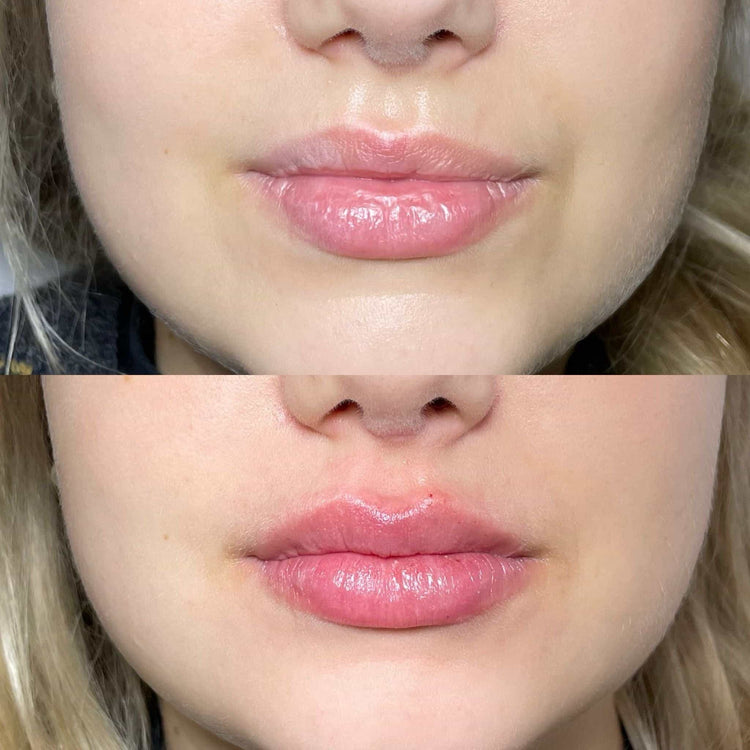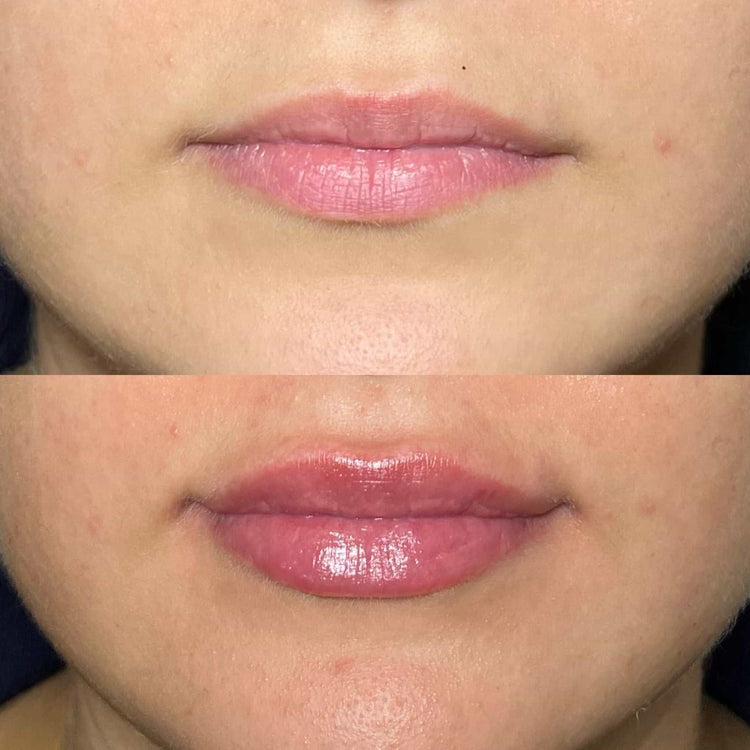Factors Affecting Dissolution Time
The duration it takes for lip fillers to dissolve is influenced by several factors, including the type of filler used, individual metabolism, and lifestyle choices. Understanding these variables can provide insight into the expected timeframe for filler resorption.
Filler Type
Filler type plays a crucial role in determining the dissolution time of lip fillers. Hyaluronic acid (HA) based fillers are the most common type and are designed to be temporary, gradually breaking down over time. The specific formulation of HA within the filler, its concentration, and additives can affect how long it lasts. Generally, HA fillers can last anywhere from 6 to 18 months.
Injection Technique
The duration it takes for lip fillers to dissolve is influenced by several factors, including the type of filler used, individual metabolism, and lifestyle choices.
Filler type plays a crucial role in determining the dissolution time of lip fillers. Hyaluronic acid (HA) based fillers are the most common type and are designed to be temporary, gradually breaking down over time. The specific formulation of HA within the filler, its concentration, and additives can affect how long it lasts. Generally, HA fillers can last anywhere from 6 to 18 months.
Individual metabolism also plays a significant role.
- Faster metabolisms tend to break down fillers more quickly.
- Slower metabolisms may result in fillers lasting longer.
Lifestyle factors can also influence dissolution time.
- Smoking and excessive alcohol consumption can accelerate filler breakdown.
- Proper skin care and hydration can help maintain filler longevity.
Understanding these variables can provide insight into the expected timeframe for filler resorption.
Individual Metabolism
The duration it takes for lip fillers to dissolve is influenced by several factors, including the type of filler used, individual metabolism, and lifestyle choices. Understanding these variables can provide insight into the expected timeframe for filler resorption.
Filler type plays a crucial role in determining the dissolution time of lip fillers. Hyaluronic acid (HA) based fillers are the most common type and are designed to be temporary, gradually breaking down over time. The specific formulation of HA within the filler, its concentration, and additives can affect how long it lasts. Generally, HA fillers can last anywhere from 6 to 18 months.
Individual metabolism also plays a significant role. Faster metabolisms tend to break down fillers more quickly while slower metabolisms may result in fillers lasting longer.
Lifestyle factors can also influence dissolution time. Smoking and excessive alcohol consumption can accelerate filler breakdown. Proper skin care and hydration can help maintain filler longevity.
Understanding these variables can provide insight into the expected timeframe for filler resorption.
Average Dissolution Timeline
The length of time it takes for lip fillers to dissolve varies depending on several factors. These include the type of filler used, an individual’s metabolism, and lifestyle choices.
Initial Weeks
Initial weeks after getting lip fillers are typically characterized by some swelling, redness, and tenderness around the injection sites. These side effects are normal and usually subside within a few days to a week.
During this period, it’s important to avoid strenuous activity, direct sunlight exposure, and touching or massaging the treated area. Following your injector’s aftercare instructions carefully will help minimize any discomfort and promote healing.
Months 1-6
The average dissolution timeline for lip fillers between months 1-6 is variable and depends on several factors.
- During the initial weeks following treatment, swelling, redness, and tenderness are common side effects that typically subside within a few days to a week.
- In the first month, noticeable softening and resorption of the filler may become apparent as the body begins to break it down.
- Between months 2-3, continued resorption occurs gradually, with a more defined change in lip shape becoming evident.
- By months 4-6, significant volume reduction is generally observed, although some individual variation exists.
Beyond Six Months
Beyond six months, the dissolution process of lip fillers continues at a slower pace. While most of the initial filler volume would have been reabsorbed by this point, trace amounts may persist for several months or even longer.
The remaining filler gradually breaks down and is absorbed by the body over time. The exact duration for complete resorption can vary depending on factors like individual metabolism and previous filler treatments.
It’s important to note that some people may experience subtle changes in lip shape even after a year or more, as the collagen production stimulated by the filler continues to adjust.
Visible Changes Over Time
The English language is constantly evolving, with new words being added and old words changing meaning. This evolution is driven by a variety of factors, including technological advancements, social changes, and cultural influences.
Early Stage Reduction
Lip fillers typically last for six to eighteen months, but the exact duration can vary depending on several factors.
Hyaluronic acid (HA) based fillers are the most common type used in lip augmentation. These fillers are designed to be temporary and gradually break down over time as your body absorbs them.
The speed at which HA fillers dissolve depends on your individual metabolism, lifestyle choices, and the specific formulation of the filler used.

Gradual Diminishing
Lip fillers typically last for six to eighteen months, but the exact duration can vary depending on several factors.
Hyaluronic acid (HA) based fillers are the most common type used in lip augmentation. These fillers are designed to be temporary and gradually break down over time as your body absorbs them.
The speed at which HA fillers dissolve depends on your individual metabolism, lifestyle choices, and the specific formulation of the filler used.
Individual metabolism plays a role in how quickly fillers are broken down. Faster metabolisms tend to metabolize fillers more rapidly, while slower metabolisms may result in fillers lasting longer.
Lifestyle factors can also influence dissolution time. Smoking and excessive alcohol consumption can accelerate filler breakdown. Proper skin care and hydration can help maintain filler longevity.
Understanding these variables can provide insight into the expected timeframe for filler resorption.
Maintenance Procedures
Lip fillers, designed to enhance lip volume and definition, typically dissolve over a period of time. The duration of this process varies depending on several factors, including the type of filler used, individual metabolism, and lifestyle choices.
Touch-Ups
Lip fillers, designed to enhance lip volume and definition, typically dissolve over a period of time. The duration of this process varies depending on several factors, including the type of filler used, individual metabolism, and lifestyle choices.

Filler type plays a crucial role in determining the dissolution time of lip fillers. Hyaluronic acid (HA) based fillers are the most common type and are designed to be temporary, gradually breaking down over time. The specific formulation of HA within the filler, its concentration, and additives can affect how long it lasts. Generally, HA fillers can last anywhere from 6 to 18 months.
Individual metabolism also plays a significant role. Faster metabolisms tend to break down fillers more quickly while slower metabolisms may result in fillers lasting longer.
Lifestyle factors can also influence dissolution time. Smoking and excessive alcohol consumption can accelerate filler breakdown. Proper skin care and hydration can help maintain filler longevity.
Understanding these variables can provide insight into the expected timeframe for filler resorption.
Refilling
Lip fillers typically last for six to eighteen months, but the exact duration can vary depending on several factors.
Hyaluronic acid (HA) based fillers are the most common type used in lip augmentation. These fillers are designed to be temporary and gradually break down over time as your body absorbs them.
The speed at which HA fillers dissolve depends on your individual metabolism, lifestyle choices, and the specific formulation of the filler used.
- Individual metabolism plays a role in how quickly fillers are broken down. Faster metabolisms tend to metabolize fillers more rapidly, while slower metabolisms may result in fillers lasting longer.
- Lifestyle factors can also influence dissolution time. Smoking and excessive alcohol consumption can accelerate filler breakdown. Proper skin care and hydration can help maintain filler longevity.
Understanding these variables can provide insight into the expected timeframe for filler resorption.
Consult with Dr. Laura Geige today at It’s Me & You Clinic to discuss lip injections
- The Side Effects Of CBD Gummy Sweets And How To Avoid Them - December 6, 2025
- The Most Common Mistakes To Avoid After Bum Filler Injections - December 3, 2025
- The Best Vape Pens For Oil In 2025: How The Craftsman Series Ranks - December 2, 2025
